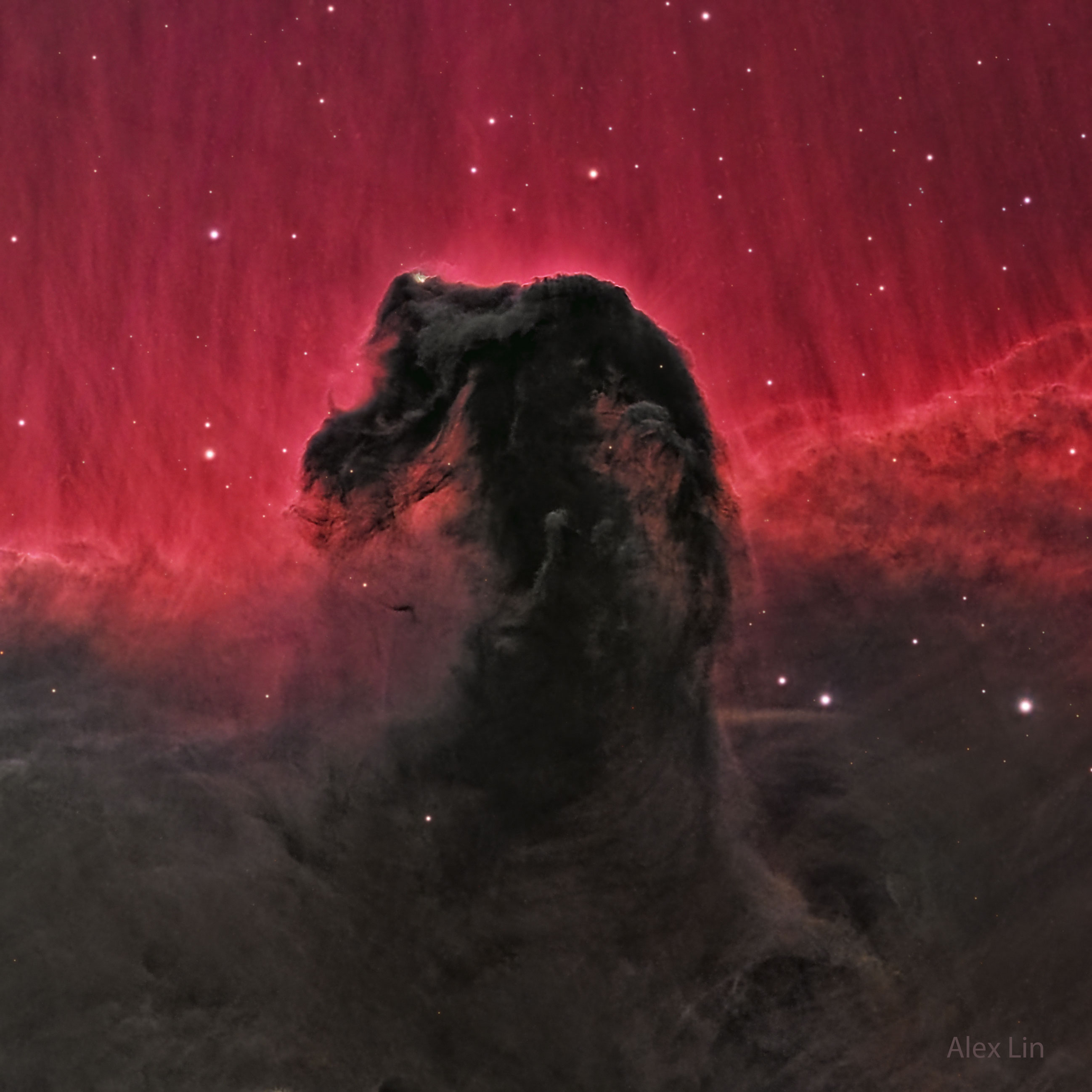
Posted on 11/25/2024 12:47:57 PM PST by MtnClimber
Explanation: One of the most identifiable nebulas in the sky, the Horsehead Nebula in Orion, is part of a large, dark, molecular cloud. Also known as Barnard 33, the unusual shape was first discovered on a photographic plate in the late 1800s. The red glow originates from hydrogen gas predominantly behind the nebula, ionized by the nearby bright star Sigma Orionis. The darkness of the Horsehead is caused mostly by thick dust, although the lower part of the Horsehead's neck casts a shadow to the left. Streams of gas leaving the nebula are funneled by a strong magnetic field. Bright spots in the Horsehead Nebula's base are young stars just in the process of forming. Light takes about 1,500 years to reach us from the Horsehead Nebula. The featured image was taken from the Chilescope Observatory in the mountains of Chile.
For more detail go to the link and click on the image for a high definition image. You can then move the magnifying glass cursor then click to zoom in and click again to zoom out. When zoomed in you can scan by moving the side bars on the bottom and right side of the image.

🪐 🌟 🌌 🍔
Sigma Orionis got an offer it couldn’t refuse...
Now that I am retired, I would love to learn how to put a bright red MAGA right down the horse’s neck. Even the Cosmos recognizes good news.
Any report that brings up Sigma Ori. is all right by me. It’s a cool star system.
Wow.
Looks like Godzilla!
Looks like a scary face on the “horse’s” back, too.
You and my wife were close- she thought it looks like a dragon.
I see a alien creature swirling up on the the column
Disclaimer: Opinions posted on Free Republic are those of the individual posters and do not necessarily represent the opinion of Free Republic or its management. All materials posted herein are protected by copyright law and the exemption for fair use of copyrighted works.